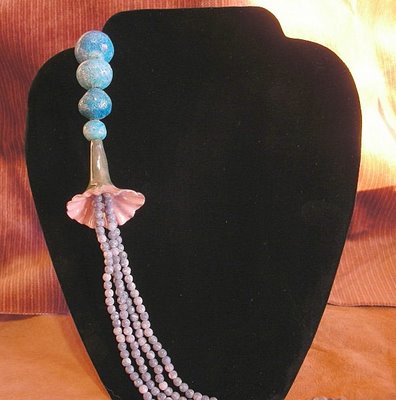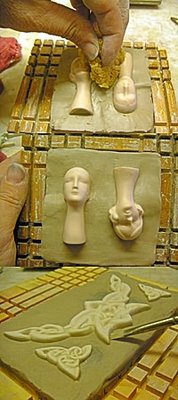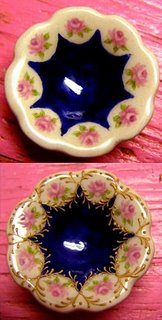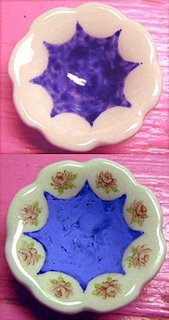
Now the mold is ready to pour the plaster. I use USG #1 pottery plaster. It is designed to absorb water at a rate that is good for slip casting which is what I normally do. Ultracal is another plaster that is available, however, it is much denser and will absorb water much more slowly. It is not generally considered acceptable for slip casting. It is a harder plaster and will maintain the mold characteristics a bit longer but it is not suitable for slip casting. If you are making a mold that you will use as a press mold it may be ok. The plaster commonly referred to as Plaster of Paris is also not a good choice for molds. This plaster is formulated for casting objects that will be painted and as such it contains ingredients to inhibit absorbtion. You may have noticed that plaster of paris objects seem to have a shiny surface somewhat harder than the interior, this is because of these additives.
In the previous step the mold was measured and the cups of water required for the plaster was determined. My apologies to those of you that use cm instead of inches my only suggestion is to measure in cm then convert to inches. 250ml is approximately one cup and if you consistantly use the formula in the same way the results should be satisfactory. For each cup of water that you came up with in the previous step you need to weigh out 11 ounces (298 grams) of plaster. You can use a simple kitchen scale or postage scale for this purpose. If you have less than one cup divide accordingly. (ie: 1/2 cup water 5.5 ounces of plaster)
Measure the water into a mixing bowl. I have a rubber investment bowl that I use and it is very convienient. Dump the plaster all at once into the water and let it sit/slake for a couple of minutes. You can see this in the first photo. If you don't have a scale you can approximate by dumping plaster into the water until it makes a little mountain out of the top of the water. For a cup of water the mountain should be no more than an inch or two. This method will work but will result in molds that absorb differently on each side and may create some problems. The main reason for weighing and measuring is to achieve consistency which results in better casting and molds that will wear better as well.
After the plaster has slaked for a couple of minutes (All the plaster has gotten wet) stir it well with a dowel or chopstick or other round stick. A round stick will help to reduce bubbles that are introduced into the plaster. The corners on flat or square sticks create a current around the edges of them that introduce bubbles into the mix. Slaking the plaster prior to stirring also helps to reduce bubbles. Once you have stirred it well tap the sides of the bowl and/or pick up the bowl and drop it from maybe 1/2 inch off the table. Just high enough to jar it you don't want it to cause the plaster to jump out of the bowl. Alternately you can vibrate the bowl on a vibrator for a few seconds. These actions bring bubble to the top.
Now carefully pour the plaster into the lowest point on the mold allowing the plaster to rise up over the model. This method of pouring the plaster will tend to pull bubbles to the top and off the model as well. Once the mold has been poured gently lift a corner at a time maybe 1/4 in and let it drop. Again this helps dislodge bubbles. Or if you have a vibrator available you can again vibrate it for a few seconds. The second photo shows the mold after it has been poured.
Plaster is a chemical reaction and it produces heat. As the plaster begins to set it will heat up. When the heat is completely gone from the mold you can remove the boards and take the mold off. The third photo shows me using the flat tool and running it between the clay and the mold board to loosen the clay from the board. You want to be careful so that you do not damage the fresh plaster. After you have loosened the clay you should be able to twist it off the board by twisting it. See the bottom photo.






















